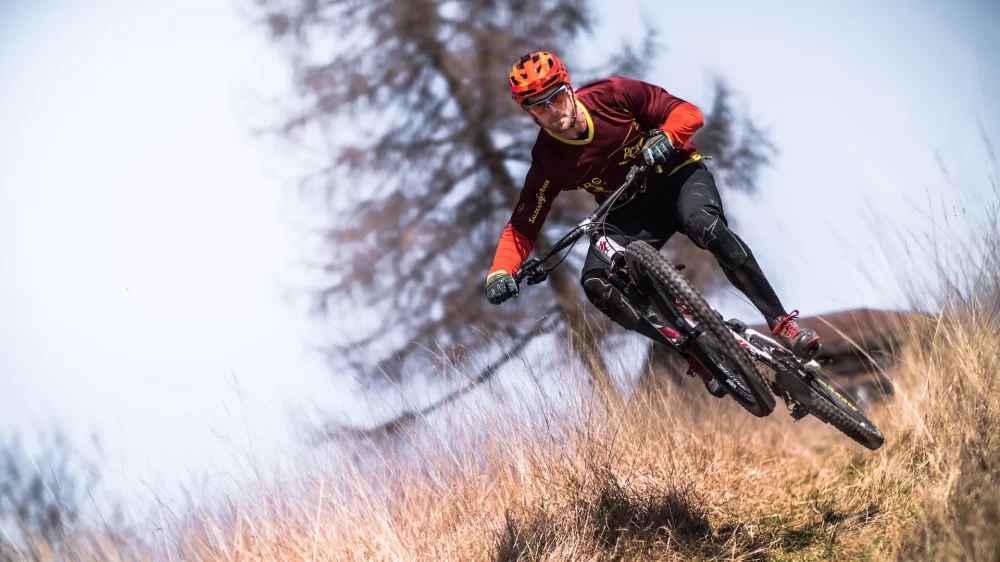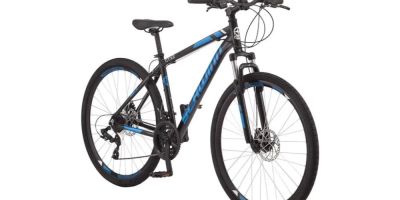
Essential Tips for Preventing Injuries While Mountain Biking
As someone who loves the thrill of mountain biking, I’ve had my share of exhilarating rides, challenging trails, and a few close calls. Mountain biking is an incredible sport, but it also comes with its risks. Whether you’re an experienced rider or just starting, it’s crucial to understand how to minimize the risk of injuries while still enjoying the ride. In this article, I’ll share some of the best tips and strategies I’ve learned over the years for preventing injuries while mountain biking. From selecting the right gear to improving riding techniques, let’s dive into the essential aspects of safety and injury prevention in mountain biking.
1. Choose the Right Gear for Maximum Protection
One of the most important steps in preventing injuries while mountain biking is wearing the right gear. A common mistake I’ve seen among beginners is underestimating the importance of proper protective equipment. Here’s what I consider non-negotiable when gearing up for a ride:
- Helmet: This is the most essential piece of equipment. Always wear a helmet, regardless of how short or easy the ride seems. The terrain can change unexpectedly, and helmets provide critical protection in case of a fall.
- Gloves: I wear gloves not just for comfort but also for protection. They help cushion falls and provide better grip, especially in muddy conditions.
- Pads: Knee and elbow pads are a good idea for added protection, especially when riding on rough trails. I’ve personally had a few falls where the pads saved me from bruises and scrapes.
- Proper Footwear: Stiff-soled shoes with a good tread provide excellent grip on the pedals and protect your feet from injuries in case you need to quickly dismount.
2. Master Your Riding Technique
In mountain biking, technique is everything. Even the best equipment cannot protect you if you don’t know how to ride properly. Over the years, I’ve learned that mastering a few key techniques can significantly reduce the risk of injury.
1. Maintain Proper Posture
When riding, especially on uneven or rocky trails, it’s essential to keep your body in the right posture. I’ve found that staying relaxed and bending my knees and elbows helps absorb bumps and keeps me balanced. This also gives me better control when navigating technical terrain.
2. Look Ahead, Not Down
It may seem like a simple tip, but looking ahead is one of the most important skills to develop. I’ve seen many riders get into accidents because they focused on obstacles just in front of them. By looking ahead, you give yourself more time to react to potential hazards.
3. Brake Properly
Braking is an art in mountain biking. I used to panic and grab both brakes hard when descending, but I quickly learned that this can cause a loss of control. Instead, I now use a technique called "feathering," where I apply light, controlled pressure to both brakes, especially on downhill sections. This keeps my bike stable and reduces the risk of sudden falls.
3. Ride Within Your Limits
One of the biggest mistakes I see riders make is pushing themselves too hard, especially when trying to impress others or keep up with more experienced riders. I’ve learned that riding within your limits is key to injury prevention. Mountain biking is all about progression, and there’s no rush to tackle advanced trails before you’re ready.
Start with easier trails and gradually challenge yourself. If you’re unsure about a particular section, it’s better to walk your bike through it rather than attempt something you might not be able to handle. This is a lesson I learned the hard way after a bad fall that could have been easily avoided.
4. Know the Trail and Environmental Conditions
Before heading out on a ride, I always make sure I’m familiar with the trail. Reading trail reviews, talking to other bikers, or even scouting out the trail beforehand can make a huge difference. Terrain changes can be subtle, but knowing what to expect helps you adjust your riding style and stay safe.
Weather is another crucial factor. Riding on wet, muddy, or icy trails increases the risk of slipping or losing control. I’ve had my fair share of unexpected slips when the weather conditions weren’t right, and now I pay close attention to forecasts before planning my rides.
5. Stay Fit and Improve Your Core Strength
Mountain biking demands a good level of fitness, and I’ve found that focusing on strength training, particularly core exercises, makes a big difference in my overall riding performance. A strong core helps maintain balance and control, particularly when navigating rough terrain or steep inclines.
In addition to core workouts, I also incorporate flexibility training into my routine. This helps me stay limber and prevents muscle strains, which are common when riding long distances or on challenging trails.
6. Pay Attention to Your Bike’s Maintenance
One thing I’ve learned the hard way is that mechanical failure can lead to accidents. A faulty brake, loose wheel, or worn-out tire can be dangerous when you’re riding at high speeds or on rough trails. Regular bike maintenance is essential to ensure everything is in working order.
Check your bike before every ride, paying attention to the brakes, tire pressure, chain condition, and overall frame integrity. I’ve made it a habit to give my bike a thorough inspection after every few rides, and it has saved me from potential accidents.
7. Don’t Ride Alone in Remote Areas
Although I love the freedom of biking on my own, I always make sure to bring a riding buddy when heading into more remote areas. If something goes wrong – whether it’s an injury, a mechanical failure, or getting lost – having someone else there can make all the difference in ensuring your safety.
8. Take Rest Days to Avoid Overexertion
One of the easiest ways to get injured while mountain biking is by overexerting yourself. I used to push through pain, thinking I could handle it, but this only led to fatigue and eventually injury. Now, I make sure to take rest days between long rides to allow my body to recover and stay in peak condition.
It’s easy to get caught up in the excitement of mountain biking, but it’s essential to listen to your body. If you’re feeling tired or sore, take a break. This will not only prevent injuries but also improve your overall performance in the long run.
9. Learn How to Fall
As strange as it sounds, learning how to fall is a crucial skill in mountain biking. The reality is, falls are inevitable, but how you fall can make a huge difference in minimizing injuries. I’ve learned to tuck and roll when falling to absorb the impact, rather than stiffening up, which could lead to more severe injuries.
Taking a skills course or watching videos on proper falling techniques can help you build the confidence to fall safely when necessary.
10. Stay Hydrated and Eat Right
Proper hydration and nutrition are vital for staying alert and preventing fatigue, which can lead to accidents. I always make sure to drink plenty of water and bring snacks, especially on longer rides. Low blood sugar or dehydration can impair judgment and coordination, making you more susceptible to falls and accidents.
Mountain biking is a sport that offers both adventure and a bit of danger, but by taking the right precautions and riding smart, you can enjoy the thrill while minimizing the risks. These tips have served me well throughout my biking journey, and I hope they help you too as you embark on your own mountain biking adventures.










